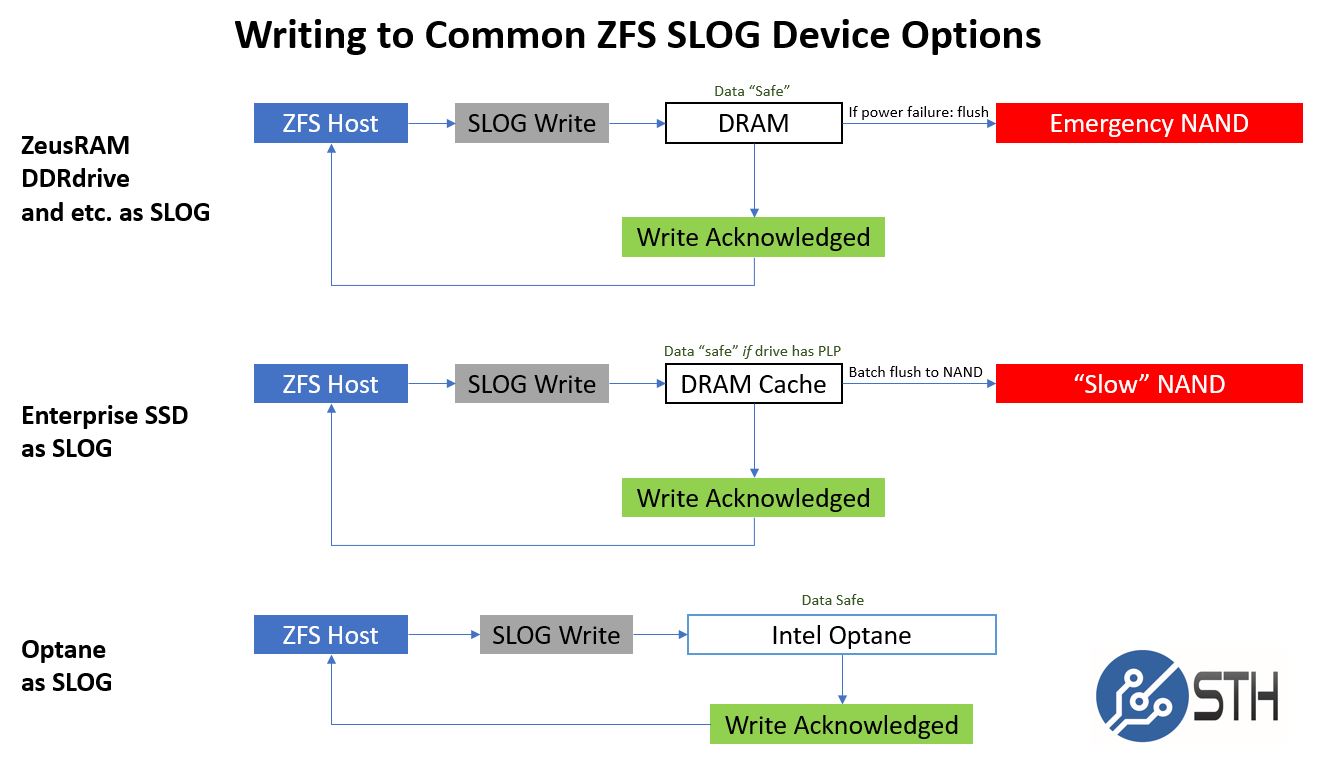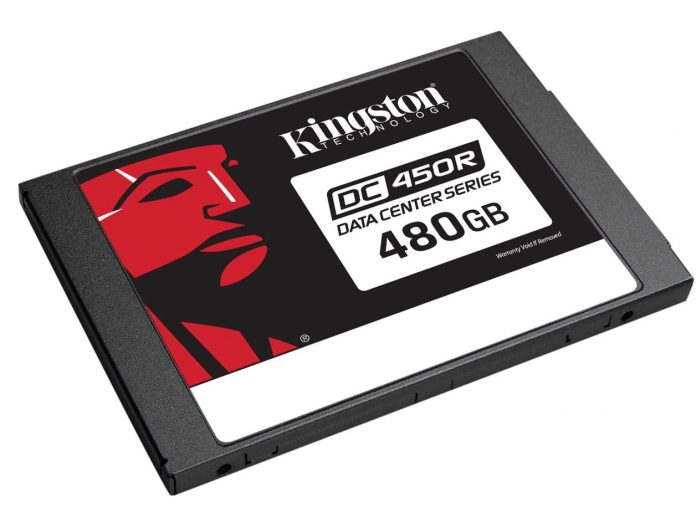Kingston released a new data center SSD. The Kingston DC450R is a 2.5″ SATA SSD with capacities ranging from 480GB to 3.84TB. Launching a new 3D TLC SATA SSD in 2019 seems a bit strange to me at least. This is the year when there is an enormous transition to NVMe and competitors are moving to QLC NAND, especially for these applications. There was one other feature that caught our eye.
Kingston DC450R SATA SSD
The Kingston DC450R SATA SSD is a read optimized drive. That means it is designed for providing low power, vibration resistant performance between that of a hard drive and an NVMe SSD. When we read through the specs (below) this line caught our attention:
- Power Loss Protection (Power Caps): No
This is extreme read optimization. Power Loss Protection (PLP) is designed to ensure data that is written to drives remains safe. A great example of this is from our What is the ZFS ZIL SLOG and what makes a good one piece.

With an enterprise or data center SSD we expect that data is written to the drive and PLP ensures that during an unsafe power event, the data stays safe. With Kingston billing the DC450R as a data center SSD designed for edge deployments, power events can be more likely.
A 2.5″ SATA SSD with encryption and without PLP is essentially a consumer drive rather than a data center drive. That is not a bad thing. For write once read many style applications like CDNs this is perfectly fine. We would simply caution our readers to not think of this as a database SSD.
Kingston DC450R SATA SSD Key Specs
Here are the key specs for the DC450R:
- Form Factor: 2.5″
- Interface: SATA Rev. 3.0 (6Gb/s)
- Capacities: 480GB, 960GB, 1.92TB, 3.84TB
- NAND: 3D TLC
- Self-Encrypting Drive (SED): AES 256-bit Encryption
- Sequential Read/Write:
- 480GB – 560MBs/510MBs
- 960GB – 560MBs/530MBs
- 1.92TB – 560MBs/530MBs
- 3.84TB – 560MBs/525MBs
- Steady-State 4k Read/Write:
- 480GB – 99,000/17,000 IOPS
- 960GB – 98,000/26,000 IOPS
- 1.92TB – 99,000/28,000 IOPS
- 3.84TB – 99,000/26,000 IOPS
- Quality of Service (Latency): Typical Read/Write: <500 µs / <2 ms
- Hot-Plug Capable
- Static and Dynamic Wear Leveling
- Power Loss Protection (Power Caps): No
- Endurance DC450R: 0.3DWPD/ 5 years
- MTBF: 2 million hours
- Warranty/support: Limited 5-year warranty with free technical support
- Power Consumption:
- 480GB: Idle: 1.05W Average Read: 1.25W Average Write: 3.03W Max Read: 1.25W Max Write: 4W
- 960GB: Idle: 1.15W Average Read: 1.3W Average Write: 3.18W Max Read: 1.3W Max Write: 4.25W
- 1.92TB: Idle: 1.22W Average Read: 1.42W Average Write: 3.44W Max Read: 1.42W Max Write: 4.5W
- 3.84TB: Idle: 1.3W Average Read: 1.48W Average Write: 3.93W Max Read: 1.48W Max Write: 5.5W




Spec-wise, this looks like a competitor to the Samsung 860 DCT “Enterprise” SSDs. They’re also heavily read-optimized, with no PLP, 0.2 DWPD, 5 year warranty, and 960GB, 1.92TB, and 3.84TB capacities. Sequential R/W ratings and Steady-state Random 4k R/W IOPs are similar as well.
Nope. Not DC. Not without PLP.
I sure hope folks don’t get caught by that. :S
PLP is a write performance thing. Has nothing to do with DC.
I love the larger capacities in the same 2.5″ footprint. The sata ssd is going to be around for a long time, replacing all the nasty little 300GB-1.2TB SAS drives we have baking in our raid arrays. Much cooler, much faster, better data tolerance. What’s not to love?
Why not put it into SAS3 as well? Higher throughput and and for chassis with expanders would be fantastic? (if only bit more expensive than SATA)